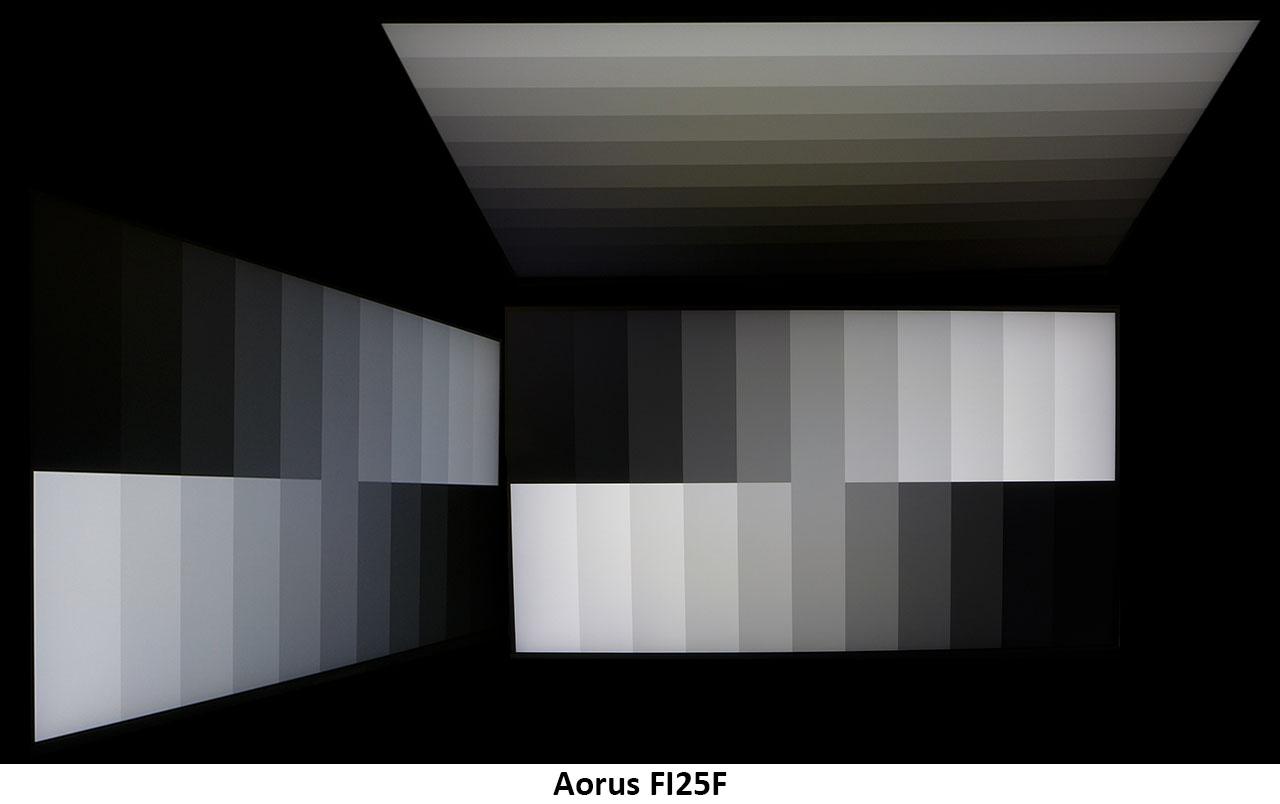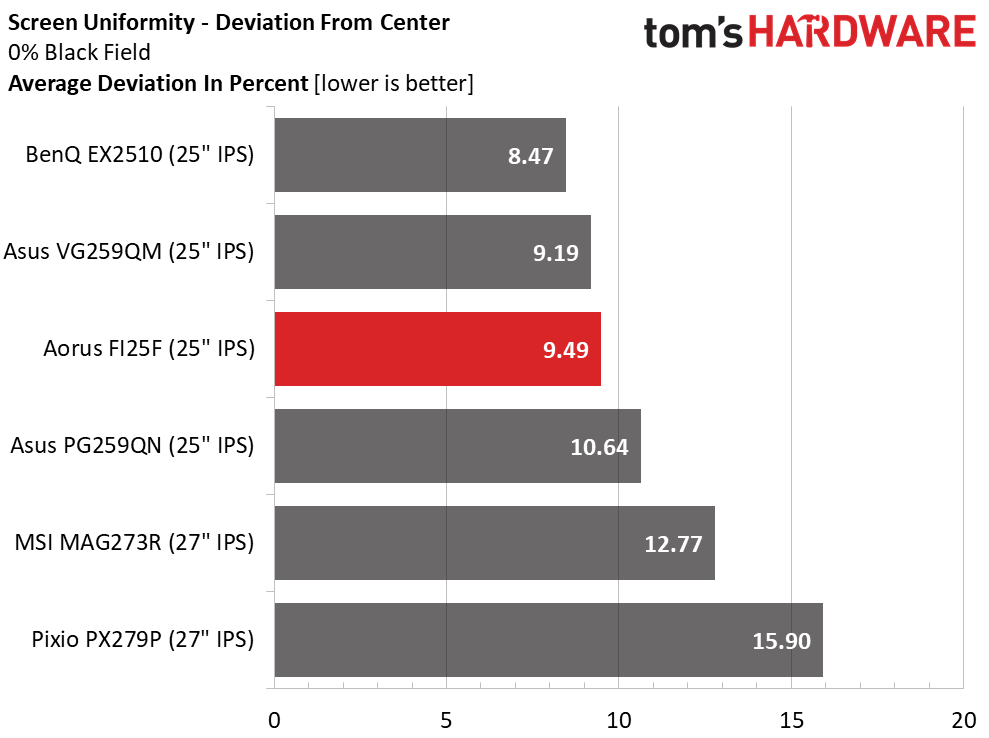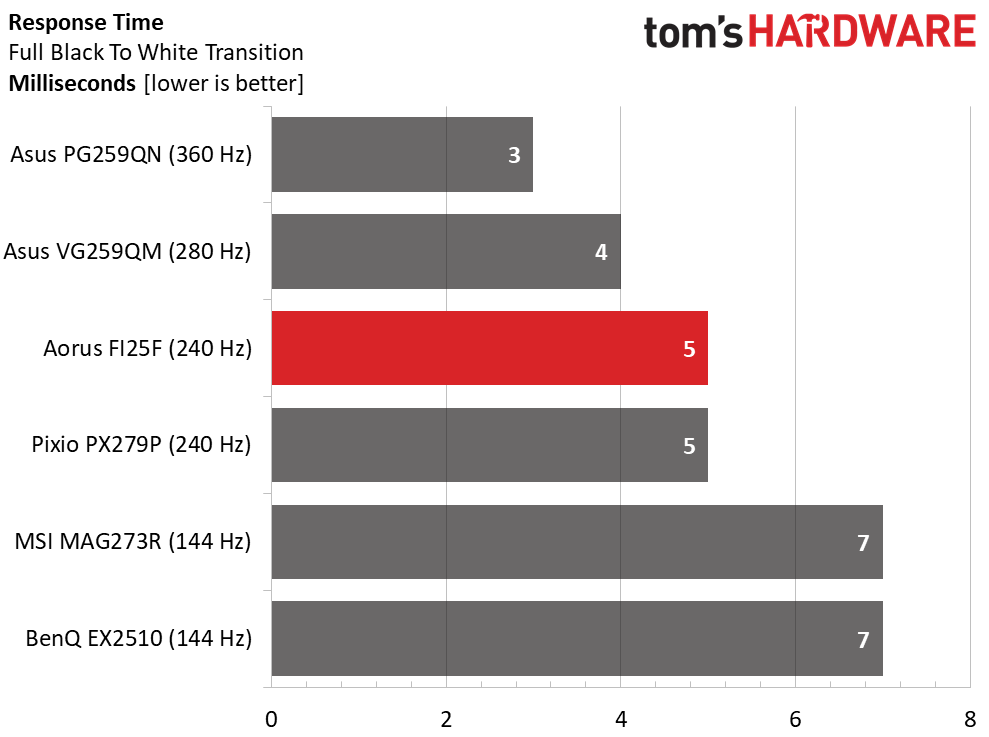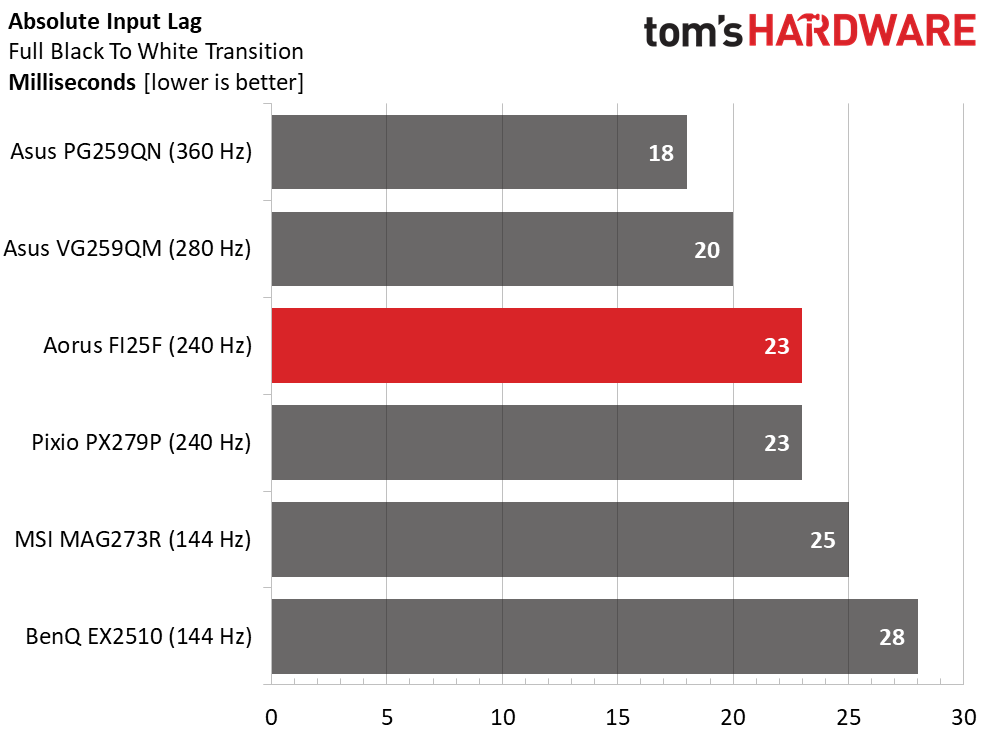Why you can trust Tom's Hardware
Viewing Angles

The Aorus FI25F uses an AHVA variant of IPS, which is engineered to deliver superior viewing angles to typical IPS panels. In our testing we could see a slight shift to blue at 45 degree to the sides and a 25% reduction in brightness. This is similar to what we’ve seen when photographing other AHVA monitors. Detail remains visible down to the darkest steps. From the top, the color shifts to green, brightness drops by 40% and detail is a little harder to resolve.
Screen Uniformity
To learn how we measure screen uniformity, click here.

Our FI25F sample exhibited solid screen uniformity. Its only flaw was a slightly higher measurement in the center zone. Though we could not see this with the naked eye, our meter measured it about 0.012 nits brighter, a minor flaw. A score below 10% in this test means no glow or bleed is visible with the naked eye.
Pixel Response & Input Lag
Click here to read up on our pixel response and input lag testing procedures.


In terms of speed, the FI25F is on par with the other 240 Hz monitors we’ve tested. 5ms is a typical screen draw time, though our sample almost managed it in 4ms. Since our camera is 1,000 fps, we can’t get finer than 1ms increments. Let’s just say the FI25F is plenty quick with no visible motion blur at 240 fps.
Input lag was equally low at a total time of 23ms. We doubt any gamers will be dissatisfied with the Aorus’ performance. Gaming is a pleasure with instant response to control inputs and a perfectly smooth moving image.
Get Tom's Hardware's best news and in-depth reviews, straight to your inbox.
Current page: Viewing Angles, Uniformity, Response & Lag
Prev Page HDR Performance Next Page Conclusion
Christian Eberle is a Contributing Editor for Tom's Hardware US. He's a veteran reviewer of A/V equipment, specializing in monitors. Christian began his obsession with tech when he built his first PC in 1991, a 286 running DOS 3.0 at a blazing 12MHz. In 2006, he undertook training from the Imaging Science Foundation in video calibration and testing and thus started a passion for precise imaging that persists to this day. He is also a professional musician with a degree from the New England Conservatory as a classical bassoonist which he used to good effect as a performer with the West Point Army Band from 1987 to 2013. He enjoys watching movies and listening to high-end audio in his custom-built home theater and can be seen riding trails near his home on a race-ready ICE VTX recumbent trike. Christian enjoys the endless summer in Florida where he lives with his wife and Chihuahua and plays with orchestras around the state.
-
RagedAPE Hello, I purchased thisReply
AROUS 25" FI25F-EK Is it the same monitor as the review? I do not know what the EK is.
Kind regards.
Ape